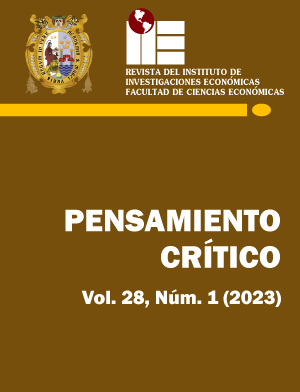Analytical proof of Gibson's paradox
DOI:
https://doi.org/10.15381/pc.v28i1.25714Keywords:
Gibson, IS/LM, Prices, Interest, Economic PolicyAbstract
The mainstream in macroeconomics and economic policy establishes an inverse relationship between the price level and the interest rate and income. To reduce inflation, an interest rate increase is used in order to depress consumption and investment, consequently reducing effective demand and inflationary pressures. If the unemployment rate is high, a reduction in the interest rate can be used to stimulate consumption and investment, which increases production and reduces unemployment. However, from the empirical work of A. H. Gibson (1922), it has been documented that in certain cases there is rather a positive relationship between the interest rate and the price level. This discovery was baptized by J. M. Keynes as the “Gibson Paradox”. This article makes an analytical demonstration of the conditions under which the Gibson Paradox can occur, which can be very useful to theoretically support future empirical work on the subject and the debate on the usefulness of monetary policy to achieve price stability.
Downloads
Published
Issue
Section
License
Copyright (c) 2023 Jorge Guillermo Osorio Vaccaro

This work is licensed under a Creative Commons Attribution-NonCommercial-ShareAlike 4.0 International License.
THE AUTHORS RETAIN THEIR RIGHTS:
a. The authors retain their trademark and patent rights, and also on any process or procedure described in the article.
b. The authors retain the right to share, copy, distribute, execute and publicly communicate the article published in Pensamiento Crítico (for example, place it in an institutional repository or publish it in a book), with recognition of its initial publication in Pensamiento Crítico.
c. The authors retain the right to make a subsequent publication of their work, to use the article or any part of it (for example: a compilation of their works, notes for conferences, thesis, or for a book), provided they indicate the source of publication (authors of the work, journal, volume, number and date).






